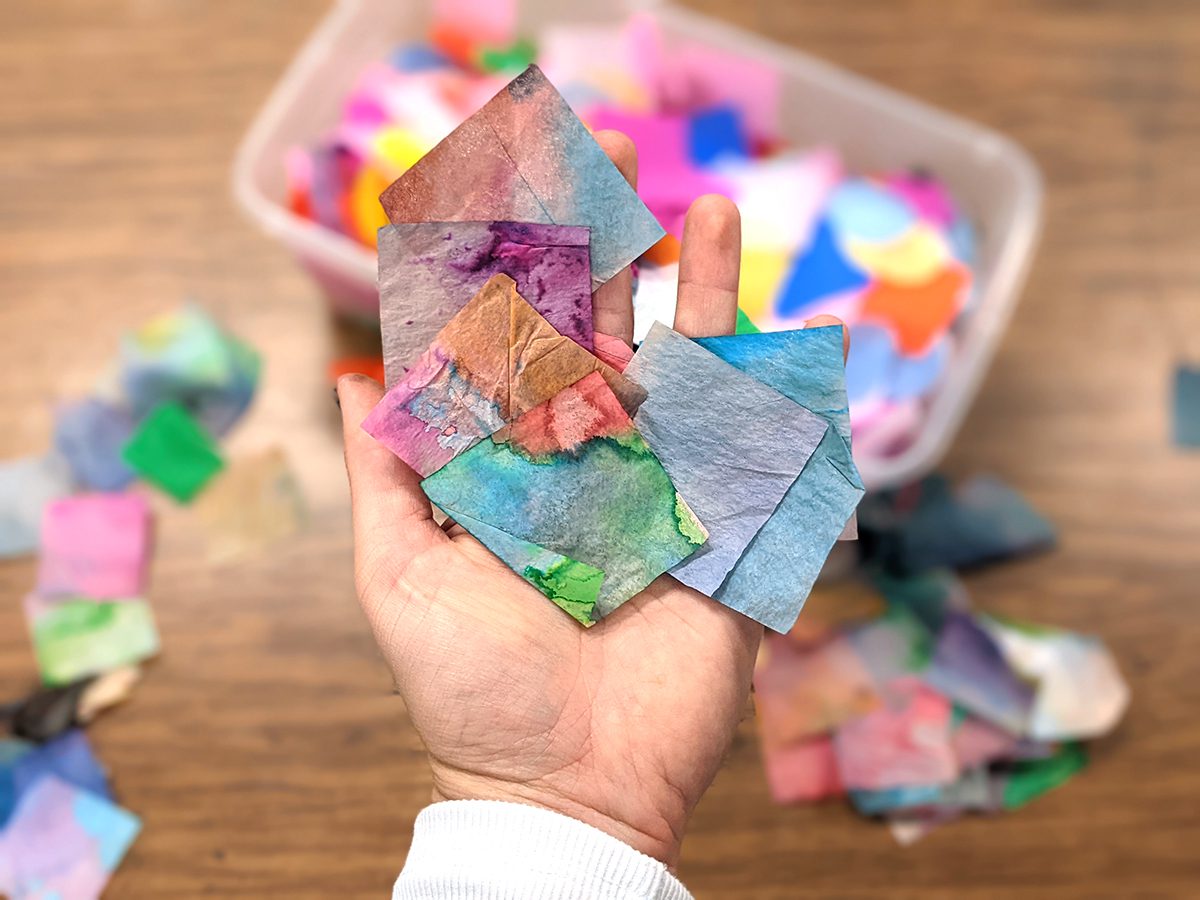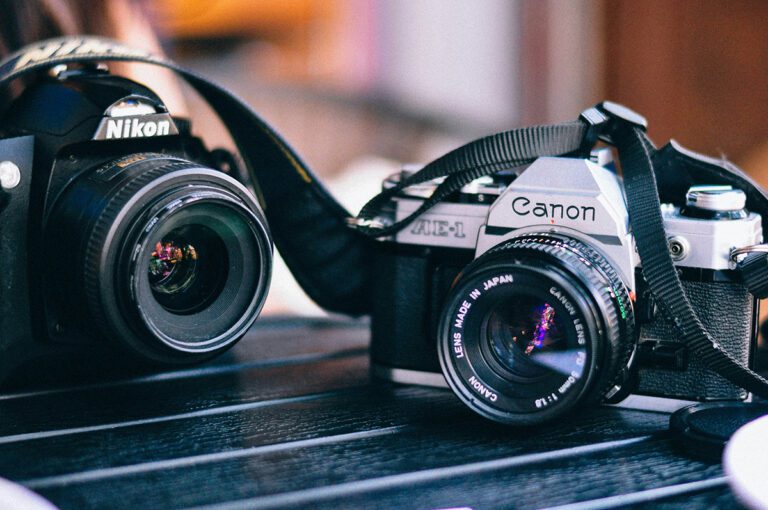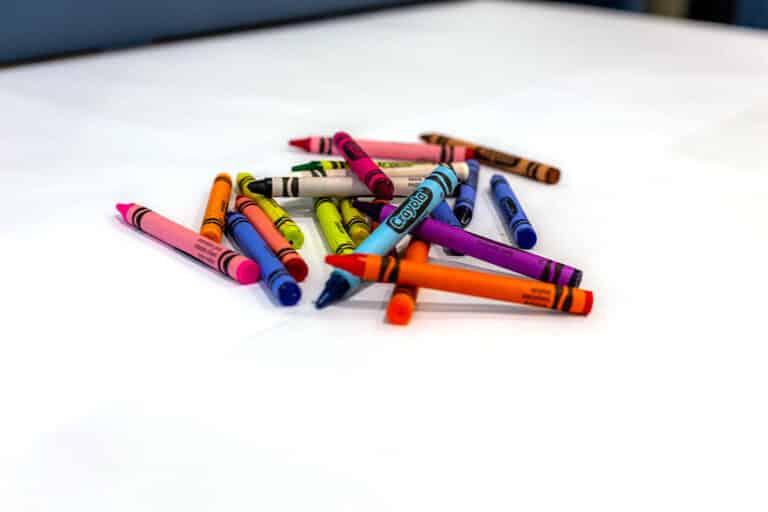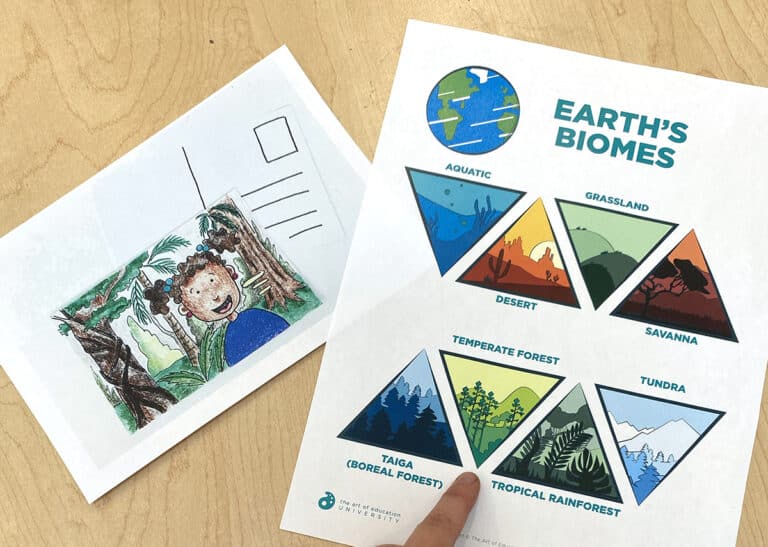Are you searching for a fun and unique art supply for your students? Look no further than tissue paper! This versatile material is soft and malleable and comes in a large variety of beautiful colors. Tissue paper is relatively inexpensive—no need to worry about breaking the art budget. You can even spot some at major stores in the craft or gift aisles. Another benefit to this thin material: it takes up little space in a storage closet or on a cart.
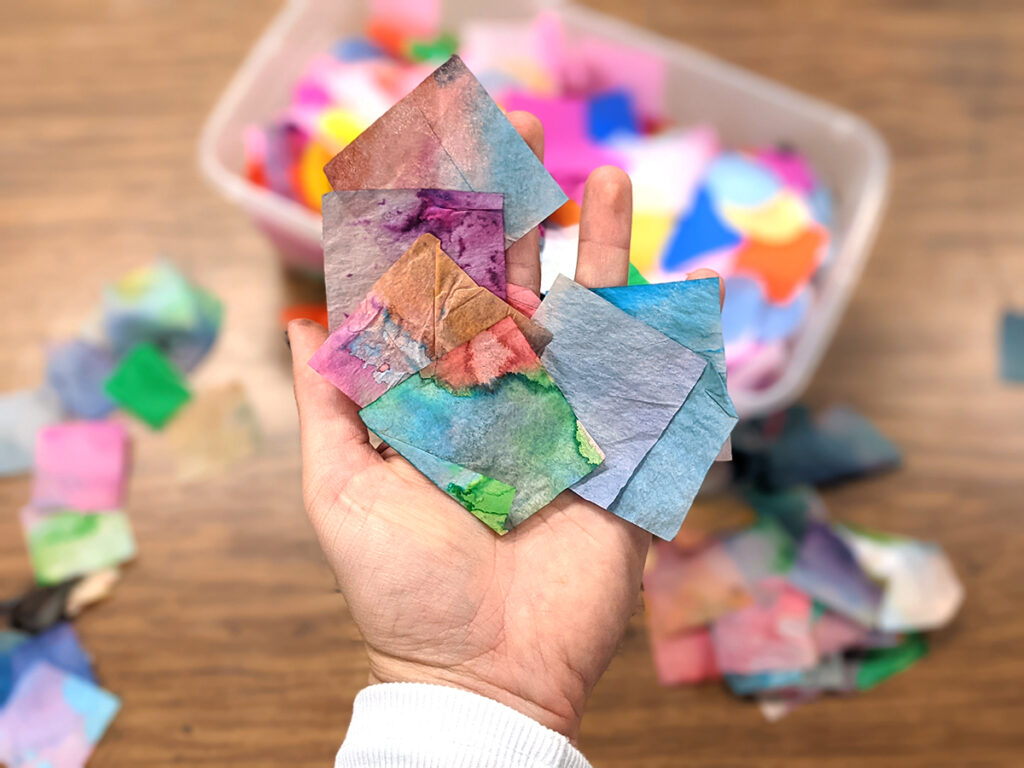
Bleeding tissue paper is a type of tissue paper that spreads its colors when in contact with water. It’s perfect for tie-dye or watercolor effects. You can purchase it online or in craft stores. The gift-wrap tissue paper typically keeps its color, making it great for collages.
Another similar option is crepe paper or crepe streamers. They can be interest-driving, tactile art materials for students to experiment with in the art room. Check out crepe paper activities like these easy crafts or realistic flowers suitable for secondary students.
Try these seven tissue paper techniques in your art room.
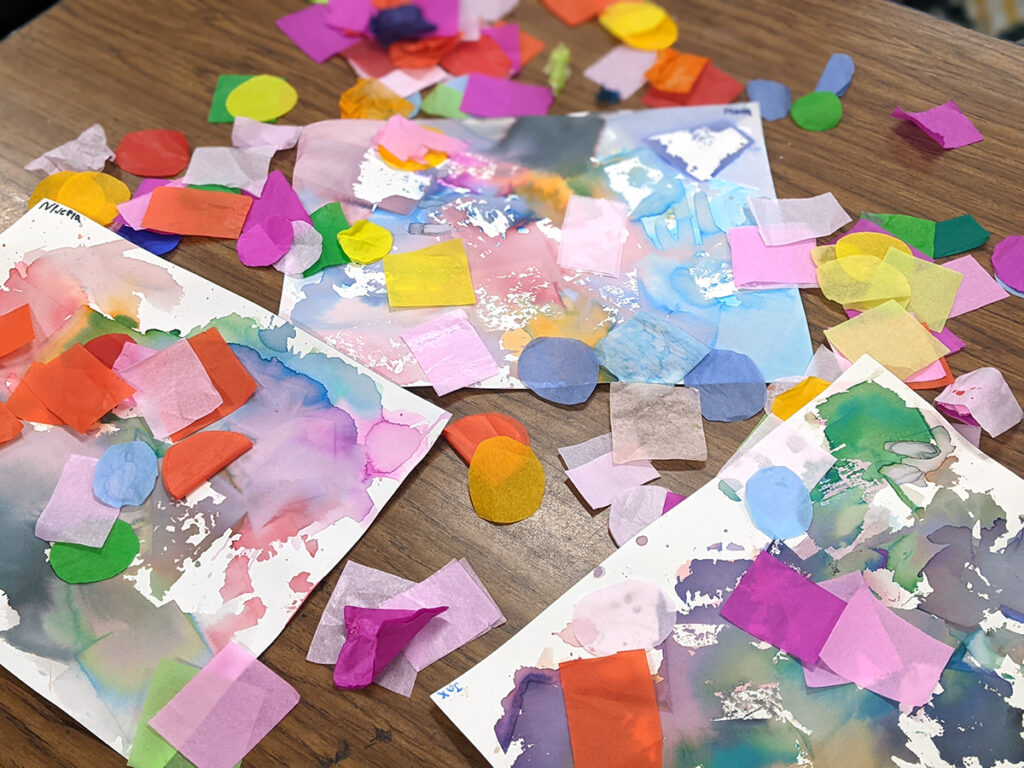
1. Explore color mixing.
This crinkly, colorful material is a guaranteed way to get students excited about color mixing. Use bleeding tissue paper for this activity or colors will not mix. Have each student place different colored squares onto watercolor paper. Take a paintbrush and dab water on top to see the colors blend. You can use this to create a background for another project or fill in a color wheel diagram. See these additional examples of bleeding tissue paper, plus other inspiring tools and materials.
Bonus Tip: Don’t throw away the tissue paper pieces after they dry. Instead, keep them in a separate tote for future projects. Students love using these bright, tie-dye squares.
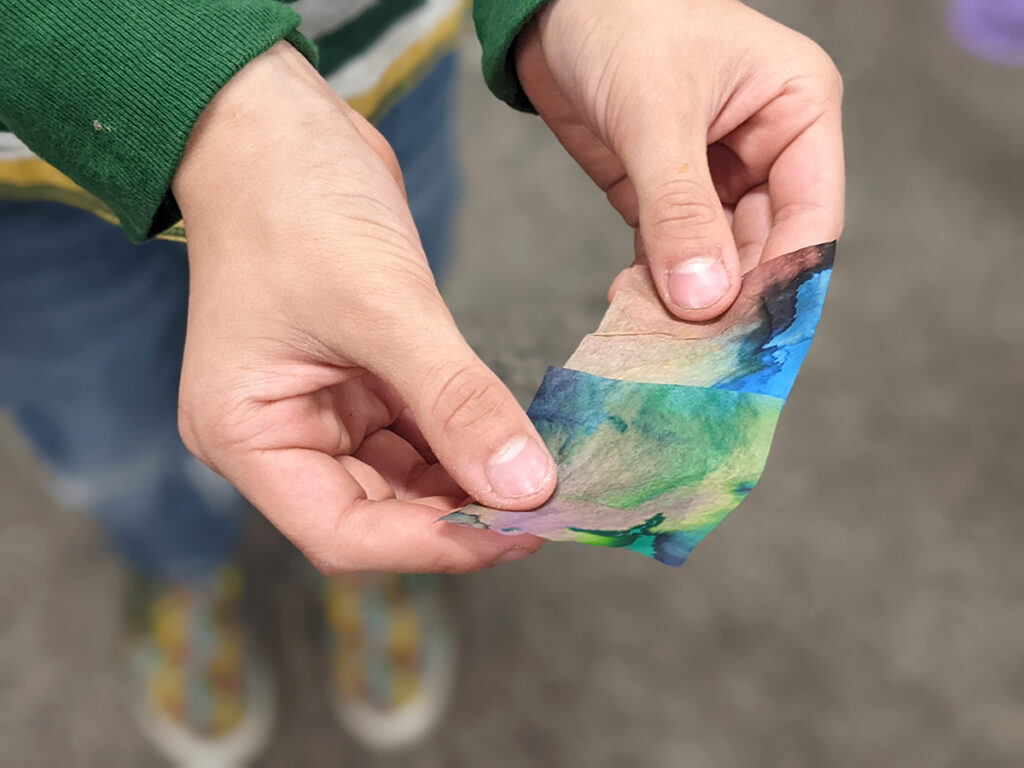
2. Create surface texture.
Tissue paper is an excellent, hands-on way to teach texture. Because tissue paper is so thin, it is easier for little hands to wad up into balls. Students can wad, crinkle, and twist the tissue paper into an endless amount of forms. Attach to two- or three-dimensional art pieces using glue or a clear sealant.
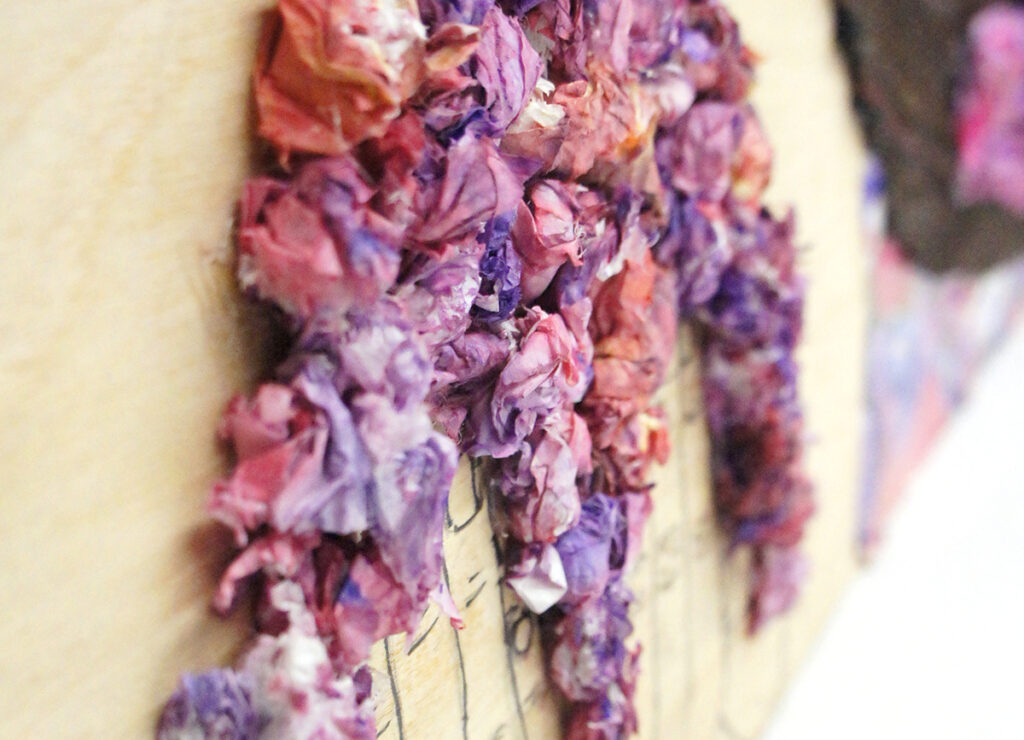
3. Construct tissue paper flowers.
Tissue paper is easy to work with which makes it perfect for sculpting three-dimensional forms. They’re poppy embellishments on any bulletin board, display, or artwork. The paper flower video shared above is suited for secondary students, but here are four easy ways to make paper flowers for elementary-aged learners.
4. Build subtle layers in a collage.
Use tissue paper for collage projects in place of construction paper. The transparency of the tissue paper creates interest and depth as pieces overlap. For more variations, combine with watercolor paint, like in the Textured Tissue Paper Animal Lesson in FLEX Curriculum.
5. Add volume.
Need a fun way to create a frame around an art piece? Small pieces of tissue paper are great for this activity. Cut tissue paper into small squares. Wrap a square around the back of a pencil. Dab glue on the end and press it onto the paper. This technique gives the tissue paper a fluffy, three-dimensional texture. It can be made to look like flowers or fireworks or add surface texture and color to pinatas.
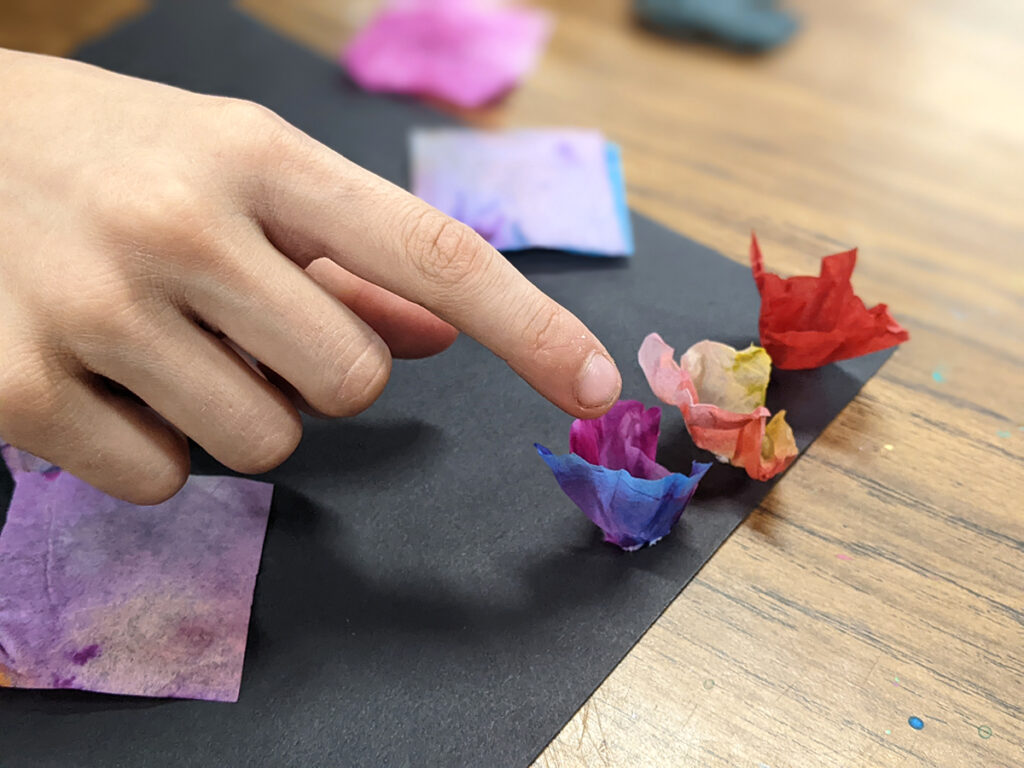
6. Pop in color to paper mâché.
When working on a paper mâché project, consider adding pieces of tissue paper to create interesting layers with the newspaper. Be sure the tissue paper is not the color bleeding type to prevent students’ hands from becoming a rainbow of color!
7. Compose a faux stained glass window.
Cut out negative shapes from a piece of black construction paper. Carefully attach tissue paper underneath for a stained glass window effect. This is an excellent exercise to demonstrate positive and negative shapes. Display it on a window and let the sun illuminate students’ artwork!
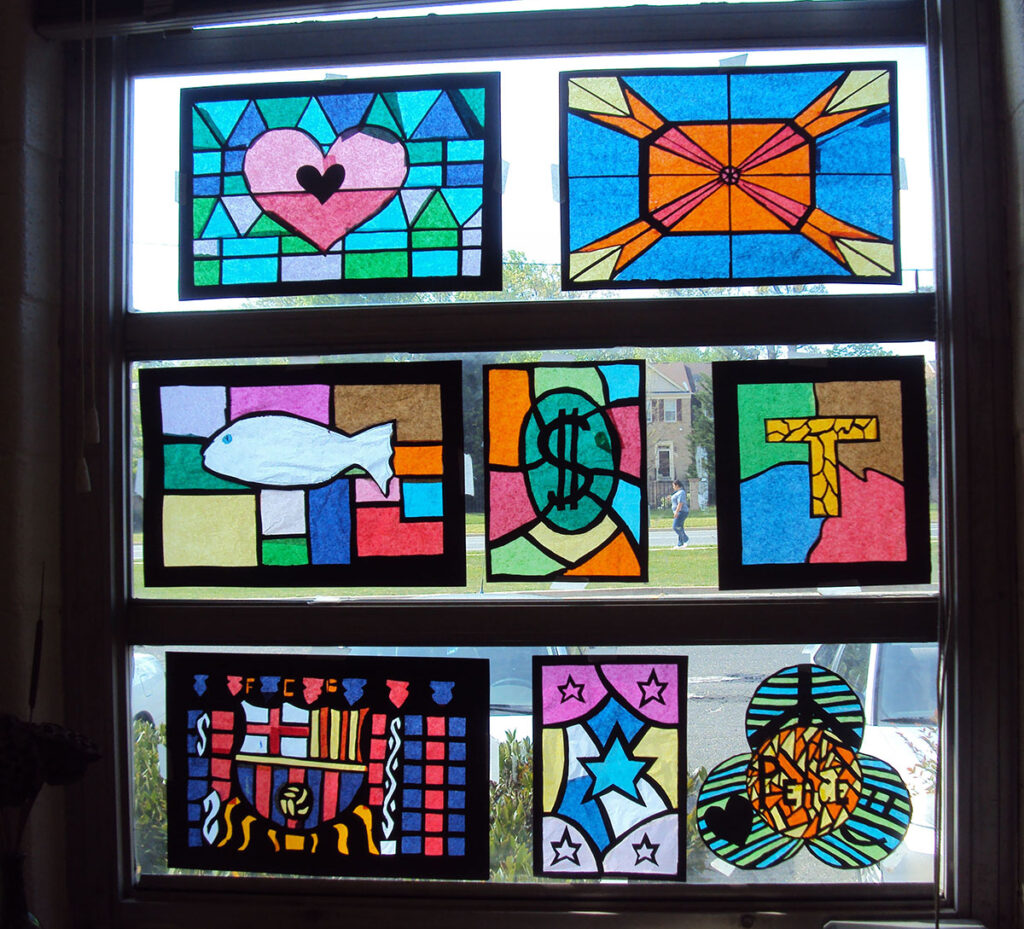
Bring tissue paper out of the supply closet and into the art room. Students love to use tissue paper because of its soft, flexible, and malleable nature. While it is very thin and delicate, it is also bursting with vibrant color and sculptural possibilities. Enhance an existing lesson by incorporating tissue paper to add volume, texture, or visual interest. Incorporate one of these ideas to explore tissue paper’s versatility!
How do you use tissue paper in your curriculum?
What is another commonly overlooked art supply you love?
Magazine articles and podcasts are opinions of professional education contributors and do not necessarily represent the position of the Art of Education University (AOEU) or its academic offerings. Contributors use terms in the way they are most often talked about in the scope of their educational experiences.
